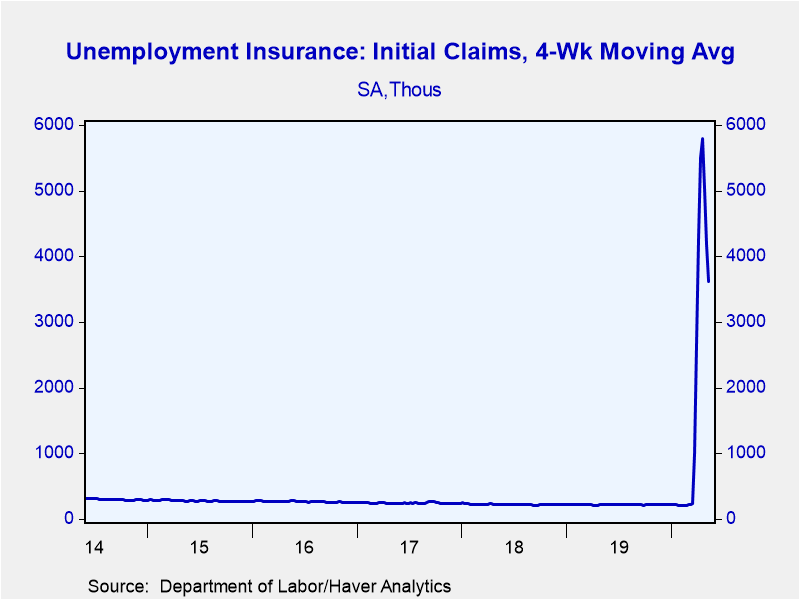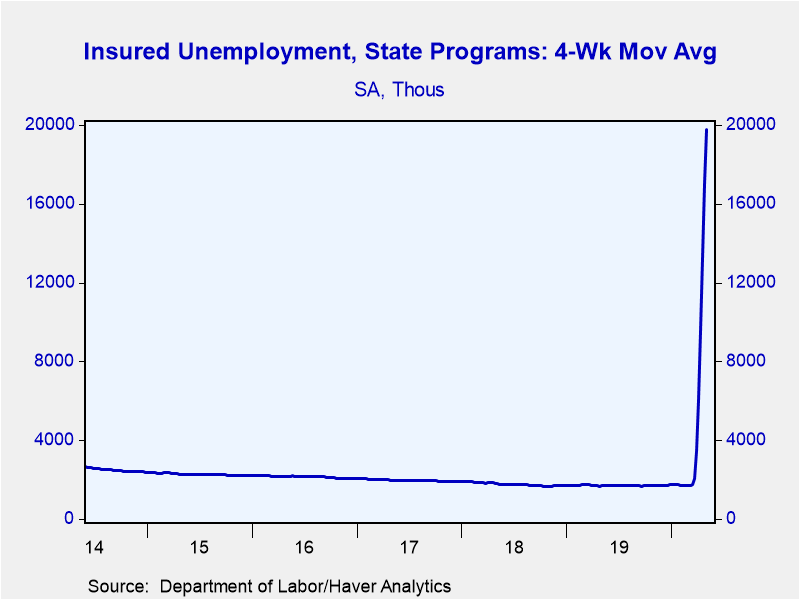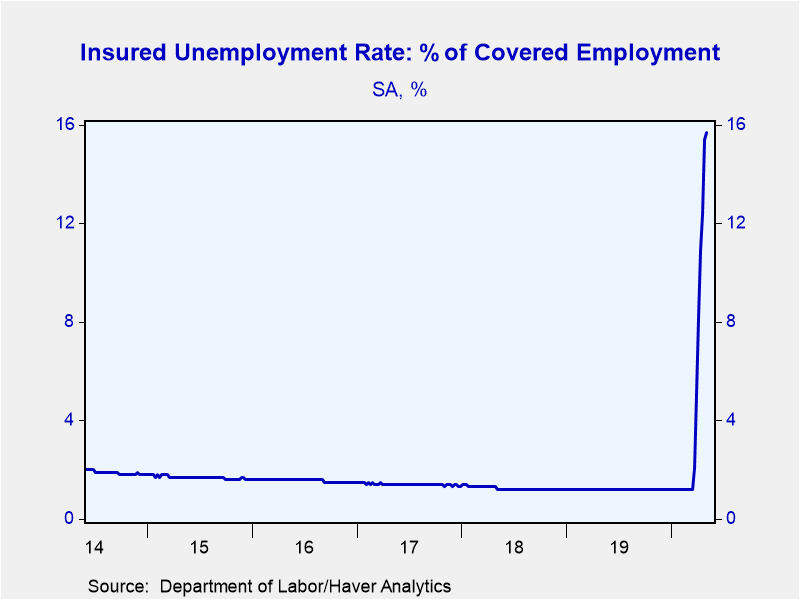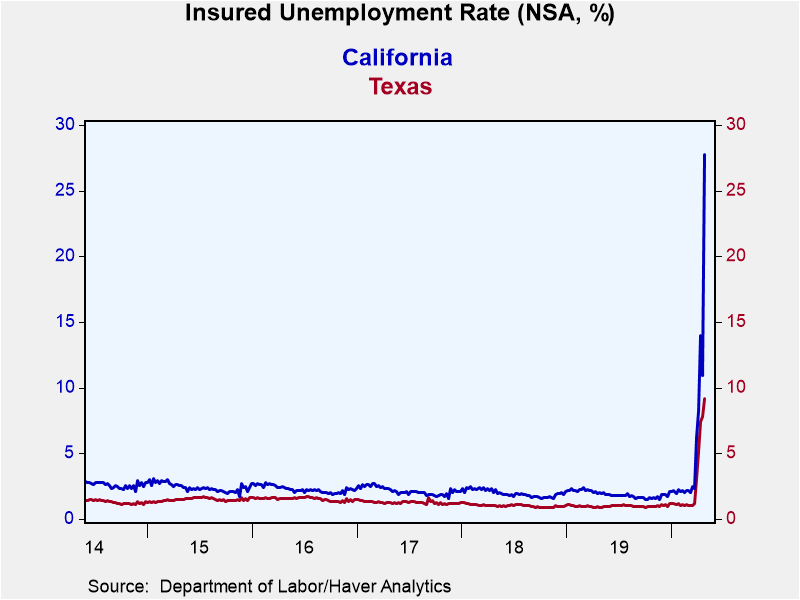 Global| May 14 2020
Global| May 14 2020U.S. Initial Claims for Unemployment Insurance Remain High; Continuing Claims Rise
by:Tom Moeller
|in:Economy in Brief
Summary
• Initial jobless insurance claims eased to 2.981 million last week. • Over the last eight weeks 36.5 million individuals, 23.3% of the labor force, filed new claims. • Continuing claims continue to increase. Initial jobless claims [...]
• Initial jobless insurance claims eased to 2.981 million last week.
• Over the last eight weeks 36.5 million individuals, 23.3% of the labor force, filed new claims.
• Continuing claims continue to increase.
Initial jobless claims for unemployment insurance fell to 2.981 million in the week ended May 9 from 3.176 million in the previous week, revised from 3.169 million. During the last eight weeks, 36.5 million people filed new jobless insurance claims. The Action Economics Forecast Survey anticipated 2.5 million initial claims for last week.
The four-week moving average of initial claims declined to 3.617 million from 4.181 million.
Initial claims filed under the Pandemic Unemployment Assistance Program slipped to 841,995.
Continuing claims for unemployment insurance increased to a record 22.833 million in the week ended May 2 from 22.377 million in the prior week, revised from 22.647 million.
The insured rate of unemployment jumped to a new high of 15.7% (data date back to 1971). The state insured rates of unemployment continued to show wide variation. California stood at 27.8% and Michigan reported 23.1%. Vermont remained high at 20.0%. New York logged 18.6% and North Carolina recorded 13.4%. At the low end, South Dakota stood at 5.7% and Texas registered 9.2%. The state rates are not seasonally adjusted.
Data on weekly unemployment claims going back to 1967 are contained in Haver's WEEKLY database, and they are summarized monthly in USECON. Data for individual states are in REGIONW. The expectations figure is from the Action Economics Forecast Survey, carried in the AS1REPNA database.
| Unemployment Insurance (SA, 000s) | 05/09/20 | 05/02/20 | 04/25/20 | Y/Y % | 2019 | 2018 | 2017 |
|---|---|---|---|---|---|---|---|
| Initial Claims | 2,981 | 3,176 | 3,867 | 1,273.7 | 218 | 221 | 244 |
| 4-wk Average | 3,617 | 4,181 | 5,040 | -- | -- | -- | -- |
| Continuing Claims | -- | 22,833 | 22,377 | 1,260.7 | 1,701 | 1,756 | 1,961 |
| 4-week Average | -- | 19,760 | 17,030 | -- | -- | -- | -- |
| Insured Unemployment Rate (%) | -- | 15.7 | 15.4 |
1.2 |
1.2 | 1.2 | 1.4 |
Tom Moeller
AuthorMore in Author Profile »Prior to joining Haver Analytics in 2000, Mr. Moeller worked as the Economist at Chancellor Capital Management from 1985 to 1999. There, he developed comprehensive economic forecasts and interpreted economic data for equity and fixed income portfolio managers. Also at Chancellor, Mr. Moeller worked as an equity analyst and was responsible for researching and rating companies in the economically sensitive automobile and housing industries for investment in Chancellor’s equity portfolio. Prior to joining Chancellor, Mr. Moeller was an Economist at Citibank from 1979 to 1984. He also analyzed pricing behavior in the metals industry for the Council on Wage and Price Stability in Washington, D.C. In 1999, Mr. Moeller received the award for most accurate forecast from the Forecasters' Club of New York. From 1990 to 1992 he was President of the New York Association for Business Economists. Mr. Moeller earned an M.B.A. in Finance from Fordham University, where he graduated in 1987. He holds a Bachelor of Arts in Economics from George Washington University.










